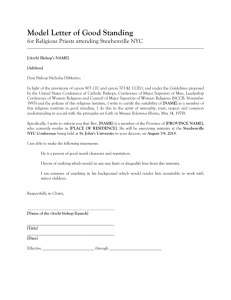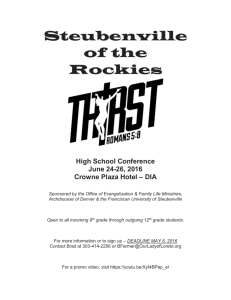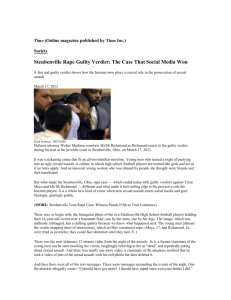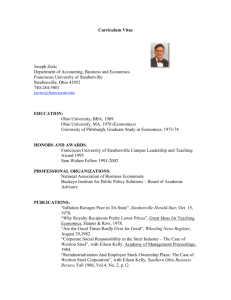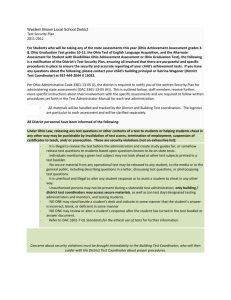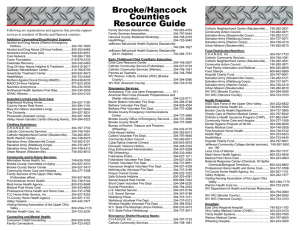Web Page: THE LAND - West Virginia Division of Culture and History
advertisement
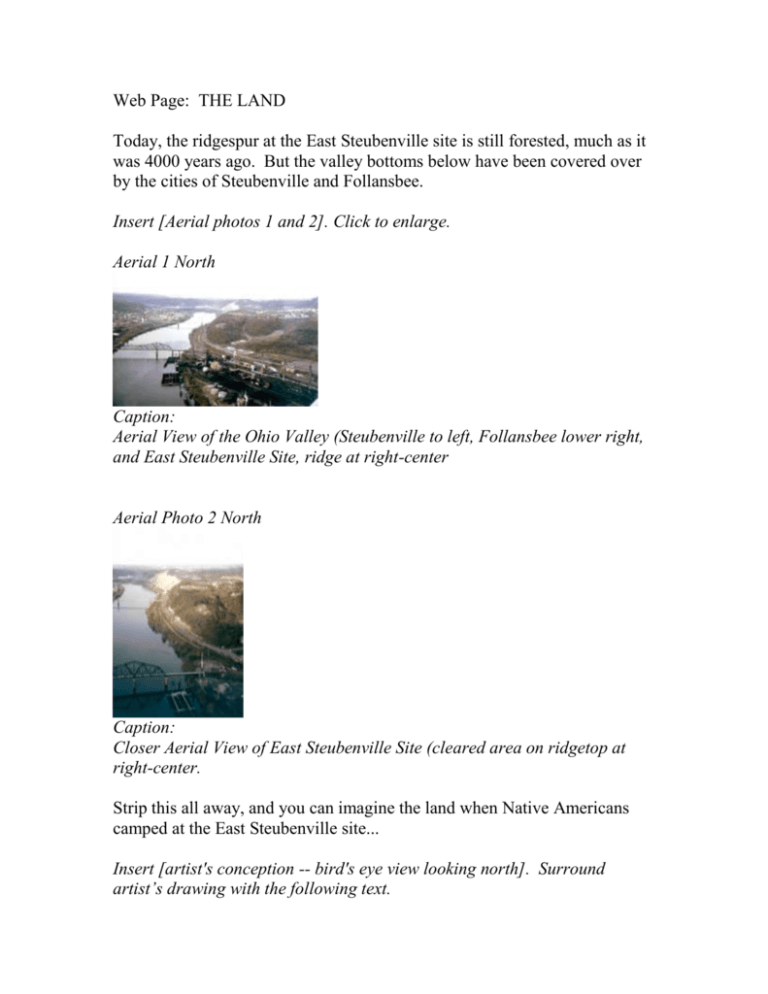
Web Page: THE LAND Today, the ridgespur at the East Steubenville site is still forested, much as it was 4000 years ago. But the valley bottoms below have been covered over by the cities of Steubenville and Follansbee. Insert [Aerial photos 1 and 2]. Click to enlarge. Aerial 1 North Caption: Aerial View of the Ohio Valley (Steubenville to left, Follansbee lower right, and East Steubenville Site, ridge at right-center Aerial Photo 2 North Caption: Closer Aerial View of East Steubenville Site (cleared area on ridgetop at right-center. Strip this all away, and you can imagine the land when Native Americans camped at the East Steubenville site... Insert [artist's conception -- bird's eye view looking north]. Surround artist’s drawing with the following text. AN ANCIENT LANDSCAPE Even 4000 years ago, this was an ancient landscape. Over 3 million years, the Ohio River had cut a channel 300 feet into the bedrock of the Appalachian Plateau in northern West Virginia. On the east side of the valley, erosion by the Ohio and Mahan Run, a stream tributary, carved a high, narrow ridgespur out of uplands that was used as the campsite for the East Steubenville Native Americans. Below ridgespur, the Ohio River flowed past level terraces, formed by floodwaters after the Ice Age. THE VALLEY'S BOUNTY What brought Native Americans here? Food was probably part of the answer. In Prehistory, before modern locks and dams, the Ohio was shallower, and in places ran over riffles where freshwater mussels could be collected. Fish inhabited deeper parts of the river: northern pike, sucker, and catfish, some so large they could only be caught by spearing. In gravel bars along the banks of the Ohio and its tributaries, Native Americans found fistsized cobbles of chert and flint, washed from rock outcrops upstream, that could be fashioned into stone tools. Flanking the river, forests of the beech, oak, maple, sycamore and hickory grew tall on the higher terraces. In the fall, groves of shagbark hickory trees drop nuts to the ground by the millions: this was a prized source of nut meat, harvested by humans and animals alike. A RIDGETOP CAMPSITE To reach the East Steubenville site, Panhandle Archaic Native Americans probably followed a trail leading out of the valley, up the south slope of the ridgespur. For reasons unknown, they chose to camp on top of this ridge, more than 300 feet above the valley bottom. Because fierce winter winds swept across this unprotected setting between January and March, they probably only camped here in the warmer months of the year. THE LAND AROUND To the north and east, Native Americans leaving the East Steubenville site encountered rolling Plateau uplands. Here, the ground was broken only by occasional streams flowing west to the Ohio. Everything was covered by a forest canopy of enormous trees, many over 100 feet high. Hunters from the East Steubenville site could have explored these uplands to stalk deer, turkey and other game.
